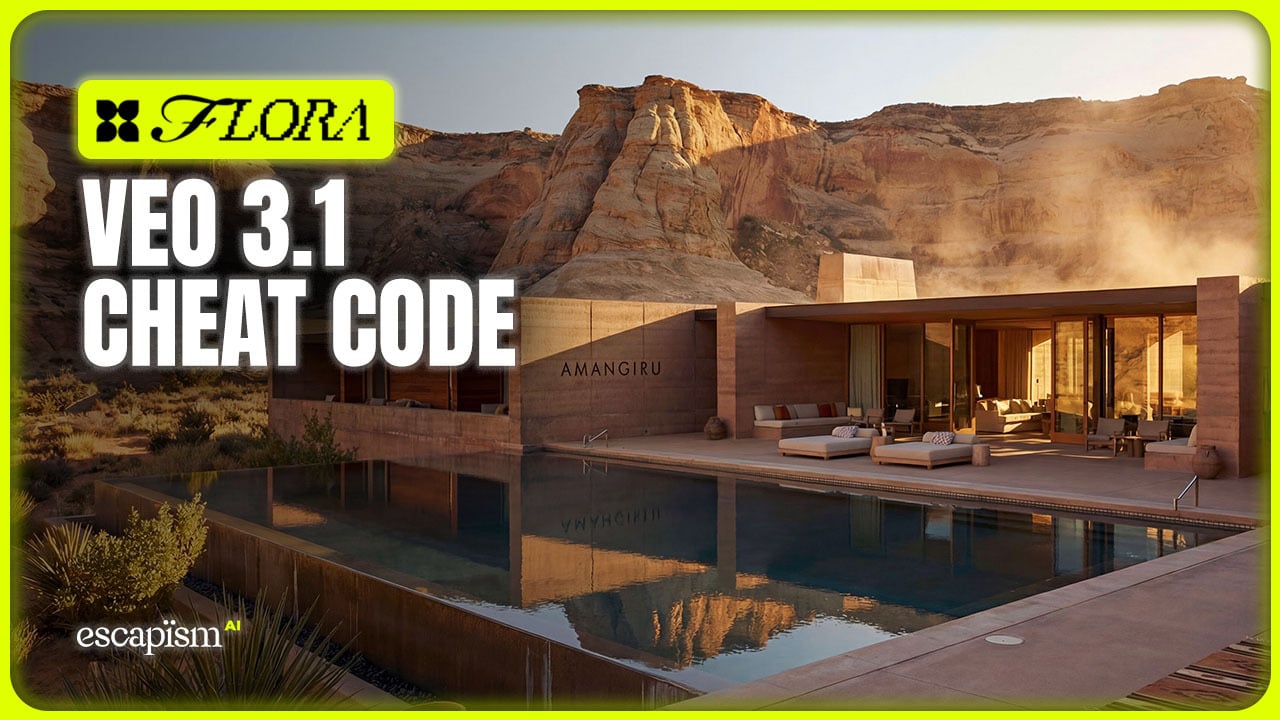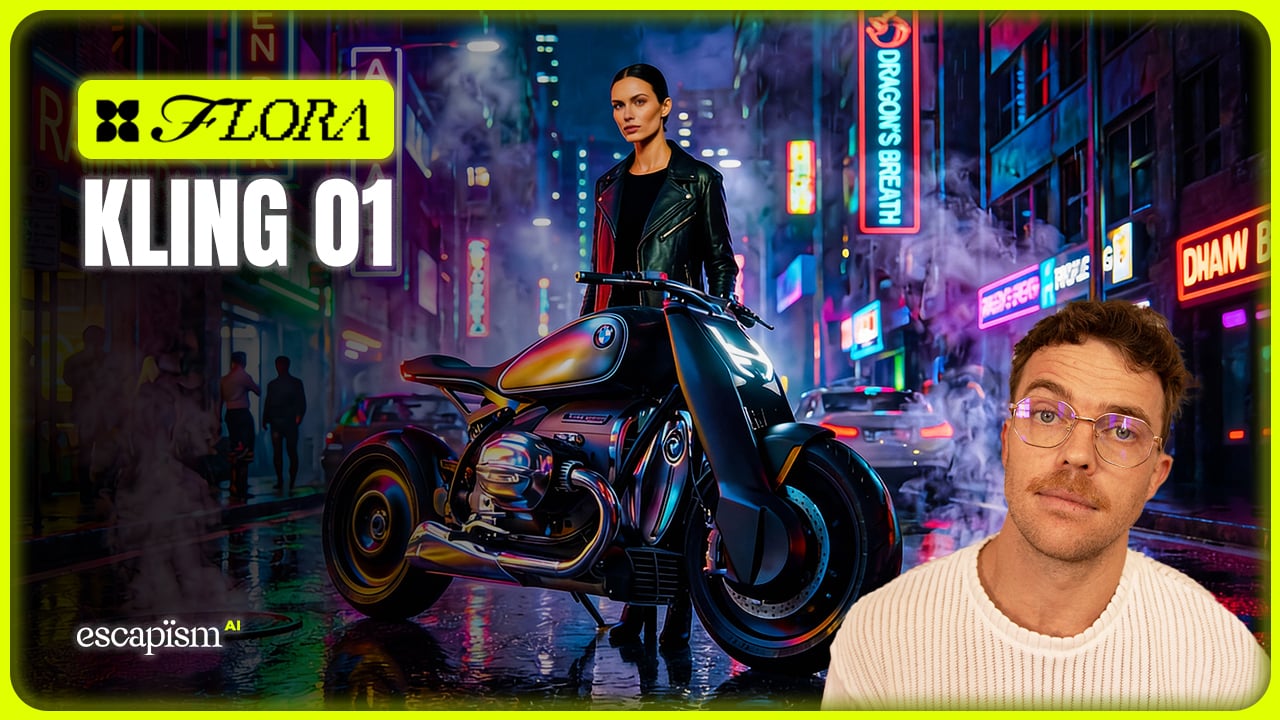I’ve been power-using AI video generators like Runway, Kling, Hailuo, Veo 3 and even Sora (remember Sora?) for the past year. The results have consistently been a mix of “WTF“ and half-usable AI video that often failed to hit the mark.
For a long time I felt AI video still had a long way to go to become truly compelling.; this month, they’re in every agency and creator’s pipeline. So let’s talk about why July 2025 might have been the tipping point for AI video generation.
MidJourney Video: From Still-Frame Wizardry to Mini-Movie Mastery

Remember when MidJourney’s “/imagine” command felt like digital alchemy, spitting out static images that looked straight out of your wildest dreams? Over the last couple of months, that same team quietly turned those single-frame stunners into fully animated loops—and the difference is night and day.
Before July, you’d get jittery, four-second GIFs that felt more novelty than narrative. Now, MidJourney Video V1 lets you define your start and end frames (goodbye awkward fades) and seamlessly loop scenes that actually tell a story. It’s like handing your mood board a pulse—and your social-media feeds a serious upgrade.
Plus, with Runway having just released it’s AI video editor, Aleph, we just took another major step towards full AI video creative control.
Controlled Storyboarding: Precisely pick your opening and closing visuals, so your loop feels intentional rather than accidental.
Seamless Looping: No more jump cuts; perfect for ambient brand loops or hypnotic art pieces.
MJ-First Workflow: Generate and share renderings right in your server—no need for clunky desktop apps.
Google Veo 3: AI Video Goes Enterprise-Casual

Google’s research arm has been toying with video-as-code for years, but until July 29, Veo 3 lived behind velvet curtains in a secret lab. Now? It’s rolling out in Vertex AI with an easy-button interface that feels more Google Docs than sci-fi.
Veo 3 Fast churns out 1080 p clips in seconds, making it trivial to spin up polished B-roll for ads or quick scene tests. I’ve used it countless times for b-roll footage and building entire campaigns and stories.
And if you thought static-to-video was futuristic, Veo 3’s upcoming image-to-video feature (rumored for August) will let you stretch a single still into dynamic motion. Early testers are already prototyping entire brand campaigns from a single mood shot.
General Availability: No more research-only gates—start building right now.
Veo 3 Fast: Trade model heft for warp-speed renders at near-HD.
Image-to-Video (Beta): Turn that hero product shot into a full-motion reveal next month.
If you’re still downloading stock footage, Google just raised the bar—time to upgrade.
Runway Aleph: Post-Production on Red Bull

Runway has always been the kid in class who finishes the assignment before lunchtime—and with Aleph, they’re rewriting the rulebook. Launched July 25, this video-to-video AI model makes traditional editing look like filing taxes by hand.
Imagine deleting an ex from your vlog, adding background actors on the fly, or relighting entire scenes—all with a single text prompt.
Aleph’s real-time preview means you see your fix as you type, and agencies are already cutting revision rounds in half. Because nothing says “creative freedom” like asking an AI to redo an entire shot while you sip your latte.
One-Line Edits: From object removal to scene remixes, all via plain English.
Real-Time Previews: Watch your changes render live—no waiting for exports.
Full-Pipeline Integration: Plug directly into Premiere Pro or FCP for seamless hand-offs.
Kling AI 2.0: Hollywood-Level Clips from Your Couch

If you blinked at Kling AI’s launch, you’d miss the memo. What started as a 4-second novelty generator has sprinted to three-minute narrative clips, all on your phone.
Kling’s explosion in the last month—30+ version bumps—means lip-sync is finally believable, character motions feel fluid, and everyone with a smartphone can now dream up their own mini-movie.
With over 45 million creators churning out 200 million videos, Kling is less “early adopter” and more “main street media.” From branded social ads to personal music videos, it’s no longer just fun—it’s a new medium.
Long-Form Clips: Stretch your story out to 180 seconds without losing quality.
Creator-Driven Network: A massive community refining prompts and sharing secrets.
Rapid-Fire Updates: Weekly feature drops mean the tool you use today is already obsolete tomorrow.
The 30-Day AI Video Shift: From Party Trick to Production Pipeline
Then (June 2025) | Now (July 2025) |
|---|---|
4–8 second demos | 30–180 second, client-ready deliverables |
“Look what the robot drew!” | “Client approved v3B; exporting to 4 K.” |
GPU wait-lists | Instant renders via Discord & Vertex AI |
Janky lip-sync | Multilingual dialogue and natural gestures |
In just one month, what felt like carnival rides have matured into assembly-line tools. If you thought AI-video was a sideshow, it’s now front-and-center in real-world workflows.
Why Creatives Should Take The Leap Today
AI-video isn’t eating your job, it’s handing you a megaphone. Every minute saved on edits is a minute you spend pitching bigger ideas or diving into new creative challenges.
The early-adopter window is closing fast, and the style you teach the algorithms now will define your signature tomorrow.
First Steps into the New Frontier of AI Video
Runway Aleph Beta: Sign up today, feed it raw B-roll, and watch your scenes transform.
MidJourney
/motion: Spin a looped mood board for that pitch deck you’ve been procrastinating.Google Veo 3 Fast: Fire up Vertex AI’s free tier and generate ten ad variants by lunch.
Kling AI Mobile: Morph yesterday’s selfie into an eight-bit hero’s journey before dinner.
June was curiosity; July was commitment. If you’ve ever wondered whether AI video would ever feel less like magic and more like muscle memory, that moment is now. Fire up your favorite tool, start typing, and let the pixels fall where they may.









